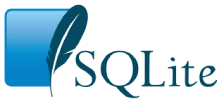| ウェブサイトをできるだけ多くの言語で地域化しようとしていますが、このページは現在Google Translateにより機械翻訳されています。 | 終了 |
-
-
製品
-
資料
-
サポート
-
会社
-
ログイン
-
.db ファイル拡張子
開発者: N/Aファイルの種類: Database Fileあなたがで終わるファイル拡張子を持つファイルを持っているので、あなたはここにいる .db. ファイル拡張子を持つファイル .db 特定のアプリケーションだけで起動することができます。それがいる可能性があります .db ファイルは、それらが全く観察されることを意図していないことを意味するデータ·ファイルではなく、ドキュメントまたは媒体である。何です .db ファイル?
いくつかのデータベース·ファイル、データベース·ファイルの作成に使用されるデータベース管理アプリケーションによって、特定の独自の形式で格納することができ、これらのデータベース管理プログラムの例は、Microsoft Accessソフトウェアである。一般的なデータベースファイルは、DB形式で格納さ一方であり、これらのDBファイルはを付し.dbの拡張子。のMicrosoft Access 2010アプリケーションはまた、ビューを作成し、DBファイルに格納されたコンテンツを編集するために、Microsoft Windowsのユーザによって使用することができる。これらの一般的なDBファイルの内容は、構造化フィールドとテーブルに編成されたテキストデータと、これらのフィールドおよびテーブルのデータ型は、これらのDBファイルの内容に含まれていてもよい含んでもよい。 DBファイル形式は、Microsoft Access 2010のソフトウェアとは別に、多くのデータベース管理アプリケーションでサポートされており、DBファイルがエクスポートされ、CSVのような他のデータベースファイル形式で保存することができる。 SQLiteのソフトウェアがインストールされ、これらのDBファイルの内容を開いて、作成および編集するために、Linuxのユーザーが使用することができます。これらのDBファイルに格納されたコンテンツのためのサポートをインポートするデータと統合され、いくつかのデータベース管理アプリケーションもある。開く方法 .db ファイル?
起動 .db ファイル、または、それをダブルクリックして、PC上の他のファイル、。あなたのファイルの関連付けが正しく設定されている場合は、意味のアプリケーションが開くように .db ファイルには、それを開きます。それはあなたが適切なアプリケーションをダウンロードしたり購入する必要があります可能性があります。それは、あなたのPC上で適切なアプリケーションを持っている可能性もありますが、 .db ファイルはまだそれに関連付けられていない。このケースでは、開こうとすると、 .db ファイルは、そのファイルの正しい1であるアプリケーションは、Windowsを伝えることができます。それ以降、開く .db ファイルには、適切なアプリケーションを開きます。 .DBファイルの関連付けのエラーを修正するには、ここをクリックしてください開くアプリケーション .db ファイル
 Microsoft Access 2010
Microsoft Access 2010Microsoft Access 2010
Microsoft Access 2010 is one of the several versions of Microsoft Access that was released in the market with the goal of providing its users with a DBMS that can combine the Microsoft Jet Database Engine with tools being used for software development together with a GUI. It allows its users to use VBA in writing together with user control and manipulation of data. It has a feature which allows the exporting and importing of various formats including dBase, Paradox, Oracle, FoxPro, Outlook, ASCII, and Excel among the other formats available. It has the capacity to link to the data being used in its current location which can be used for different purposes such as editing, reporting, viewing and querying. It uses the format Jet Database which has the ability of containing the data and the application in just a single file. SQLite
SQLiteSQLite
SQLite is a database management software with the necessary tools to create and manage SQLite databases. It opens and works with memory databases like te sqlite 2.x, sqlite 3.x and REALSQL Server databases. It creates browse tables, views, triggers and indexes and enables records to be inserted, deleted and updated and it supports arbitrary SQL commands. It features a detailed analyzer, foreign key support, a built-in virtual machine analyzer, built-in optimizer and a built-in language reference. It can display JPEG, BMP and TIFF file formats, as well as QuickTime from BLOB records, and it has the ability to open hidden files or hidden bundles under Mac OS X. It saves frequently used SQL and converts SQLite 2 databases to SQLite 3. It has advanced import and export capabilities and it can generate reports using report templates. It has a spreadsheet-like interface and offers quick access to basic functions. The interface contains all of its main features and complicated command line commands are stored inside a simple button. The same interface is used on MacOS X and Windows version with a multiplatform license for multiplatform databases. Microsoft SQL Server (2008)
Microsoft SQL Server (2008)Microsoft SQL Server (2008)
SQL Server 2008, formerly codenamed Katmai, was released on August 6, 2008 and goals to make data self organizing, management self-tuning, and self maintaining with the improvement of SQL Server Always On technologies, to give almost-zero downtime. SQL Server 2008 also includes support for structured and semi-structured data, as well as digital media formats for pictures, audio, video and other multimedia data. In present versions, such multimedia data can be saved as BLOBs (binary large objects), but they are generic bit streams. It also natively supports hierarchical data, and includes T-SQL constructs to directly deal with them, without using recursive queries. Basic awareness of multimedia data will permit specialized functions to be performed on them. According to Paul Flessner, senior Vice President, Server Applications, Microsoft Corp., SQL Server 2008 can be a data storage backend for different varieties of data: XML, email, time/calendar, file, document, spatial, etc as well as perform search, query, analysis, sharing, and synchronization across all data types.戒めの言葉
上の拡張子の名前を変更しないように注意してください .db ファイル、またはその他のファイル。これは、ファイルの種類を変更することはありません。特殊な変換ソフトウェアを別のファイルタイプのファイルを変更することができます。ファイルの拡張子は何ですか?
ファイル拡張子は、ファイル名の末尾の3つまたは4つの文字の集合であり、この場合には、 .db. ファイル拡張子は、それがファイルのタイプを教えてくれて、それを開くことができますどのようなプログラムは、Windowsを教えてください。あなたがファイルをダブルクリックすると、プログラムが自動的に起動するように、Windowsは、多くの場合、各ファイルの拡張子を既定のプログラムに関連付けます。そのプログラムがPC上でなくなったときに、関連付けられたファイルを開こうとすると、時々エラーを取得することはできません。コメントを残す

